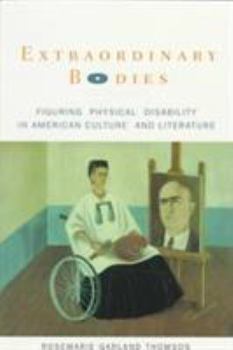Extraordinary Bodies: Figuring Physical Disability in American Culture and Literature
Select Format
Select Condition 
Book Overview
Inaugurates a new field of disability studies by framing disability as a minority discourse rather than a medical one, revising oppressive narratives and revealing liberatory ones. The book examines disabled figures in Harriet Beecher Stowe's Uncle Tom's Cabin and Rebecca Harding Davis's Life in the Iron Mills, in African-American novels by Toni Morrison and Audre Lorde, and in the popular cultural ritual of the freak show
Format:Paperback
Language:English
ISBN:0231105177
ISBN13:9780231105170
Release Date:April 1996
Publisher:Columbia University Press
Length:248 Pages
Weight:0.71 lbs.
Dimensions:0.5" x 6.0" x 9.0"
Age Range:22 years and up
Grade Range:Postsecondary and higher
Customer Reviews
1 rating
Integrating disability theory and literary criticism
Published by Thriftbooks.com User , 25 years ago
Rosemarie Garland Thomson has written a book that is groundbreaking and essential reading for anyone interested in the fields of disability theory, disability studies, and literary criticism. She has skillfully examined how the figure of the disabled body has been used in literature in different periods as a marker or boundary line for defining what the "normal" body is or should be. The disabled figure operates to displace anxiety from more "normal" folks, and in the process shows how what we consider to be normal functioning changes across historical periods and cultures. Thomson also compares the disabled figure to the cyborg, as both are figures that are not seen as "natural," and both are places/signifiers where we can then interrogate what the natural is, has been thought to be, and what it could include. This is an excellent book, and should not be missed.





